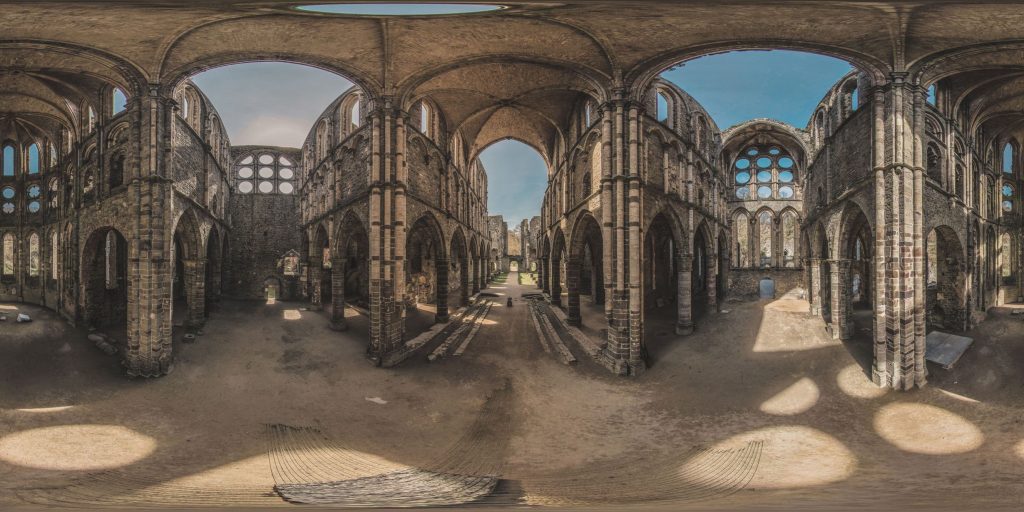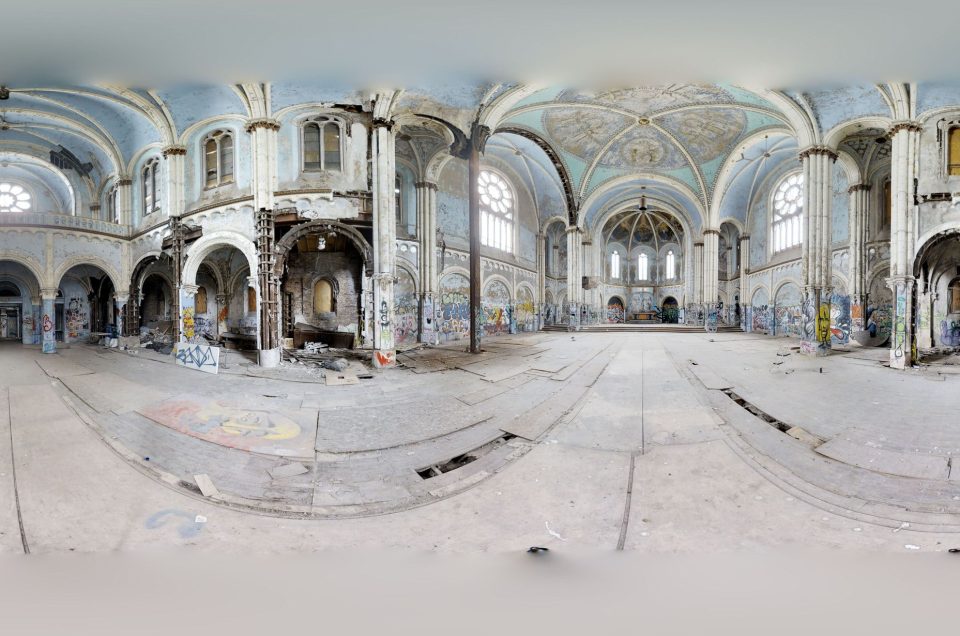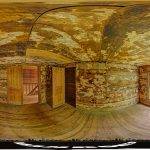Exploring the Mystique of the Villers Abbey: A Journey Through Time
Embark on an extraordinary journey into the past with the immersive experience provided by Google Maps Street View. The platform offers an incredible collection of 360-degree panoramic images that allow you to virtually step back in time and explore the historical site of Villers Abbey. As you navigate through these images, you are transported into a world of medieval architecture and history. The vivid details and expansive views captured in each panoramic image give a sense of being physically present at the site, making it a unique and enriching experience for those interested in history, architecture, or virtual tourism. This digital exploration of Villers Abbey via Google Maps Street View is not just about viewing the past; it’s about experiencing it in a modern, interactive way.
Image by: Abbaye de Villers
Image by: Little Planet
The Villers Abbey, nestled in the serene town of Villers-la-Ville in Belgium, stands as a majestic testament to medieval architecture and the rich historical tapestry of Europe. In this comprehensive exploration, we delve into the origins, purpose, and eventual decline of this fascinating abbey.
The Birth of the Villers Abbey
The story of the Villers Abbey begins in the 12th century, a period marked by a surge in monastic life across Europe. Founded in 1146 by Saint Bernard of Clairvaux, the abbey was built under the aegis of the Cistercian Order. The Cistercians, known for their commitment to a life of austerity, prayer, and manual labor, sought to establish a spiritual haven away from the excesses of the world.
Architectural Splendor
As we walk through the remnants of the abbey, its architectural grandeur still speaks volumes. The initial structures were predominantly Romanesque, but as time progressed, the abbey embraced the Gothic style, which was reflective of the evolving artistic and architectural trends of the period. The church, cloister, and living quarters of the monks were designed not only for functionality but also to inspire spiritual contemplation.
A Hub of Spirituality and Industry
The Villers Abbey was not just a place of worship; it was a self-sustaining community. The monks engaged in various forms of labor, including agriculture, brewing beer, and manuscript copying. The abbey became a center of intellectual and spiritual life, attracting pilgrims and scholars from far and wide.
The Golden Era
The 13th century marked the golden era of the Villers Abbey. With a community of over a hundred monks and three hundred lay brothers, the abbey flourished both spiritually and economically. The abbey’s influence extended beyond its immediate surroundings, impacting the social and economic fabric of the region.
Decline and Abandonment
However, the prosperity of the Villers Abbey was not to last. The 16th century ushered in a period of decline, exacerbated by the religious wars that swept across Europe. The abbey suffered significant damage during these conflicts, leading to a gradual decrease in its monastic population.
The final blow came in the wake of the French Revolution. In 1796, the abbey was officially abandoned, following the dissolution of monastic orders in the region. The once-thriving spiritual center was left to decay, its stones even used by locals for building materials.
The Abbey Today: A Monument to Perseverance
Today, the ruins of the Villers Abbey stand as a poignant reminder of the impermanence of human endeavors. Yet, there is beauty in its decay. The site has become a popular destination for tourists and history enthusiasts, offering a glimpse into a bygone era. The preservation efforts ensure that the legacy of the Villers Abbey continues to inspire future generations.
Reflections and Final Thoughts
The journey through the Villers Abbey is more than an exploration of ancient stones and forgotten hallways. It is a walk through history, a reflection on the lives of those who once called this place home. The abbey’s story is one of faith, resilience, and ultimately, the relentless march of time.
In conclusion, the Villers Abbey is not just a historical site; it is a narrative woven into the fabric of European history. It stands as a symbol of the cultural, spiritual, and architectural achievements of the medieval period, and its ruins echo the stories of those who lived, prayed, and worked within its walls.

A spectacular 360-degree panoramic image captured by the Little Planet Team inside the Villers Abbey in Belgium.
Do you have 360-degree panoramic images captured in an abandoned location? Send your images to Abandonedin360@gmail.com. If you choose to go out and do some urban exploring in your town, here are some safety tips before you head out on your Urbex adventure.
Unlock the secrets of exploration by diving into precise GPS data available exclusively for an array of hidden gems and hundreds of other captivating sites, all within our members’ section. By investing in a Gold Membership, you’re not just gaining access; you’re securing a key to a vast, global archive of abandoned, untouched, and mysterious locations waiting to be discovered. Embark on your adventure with confidence, knowing every corner of the world can be within your reach. Don’t just observe—explore, discover, and claim the extraordinary journey that lies ahead with our treasure trove of world secrets. Subscribe now and transform the way you see the world!
If you want to start shooting 360-degree panoramic images, you might want to look onto one-click 360-degree action cameras.
Click on a state below and explore the top abandoned places for urban exploring in that state.






